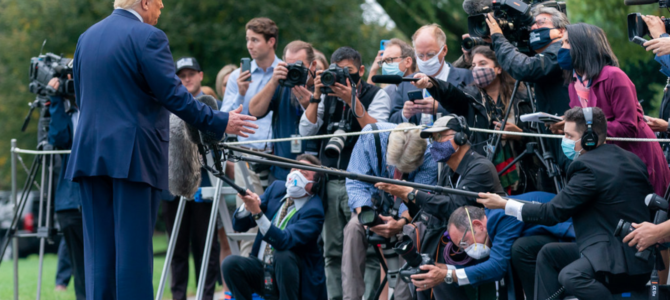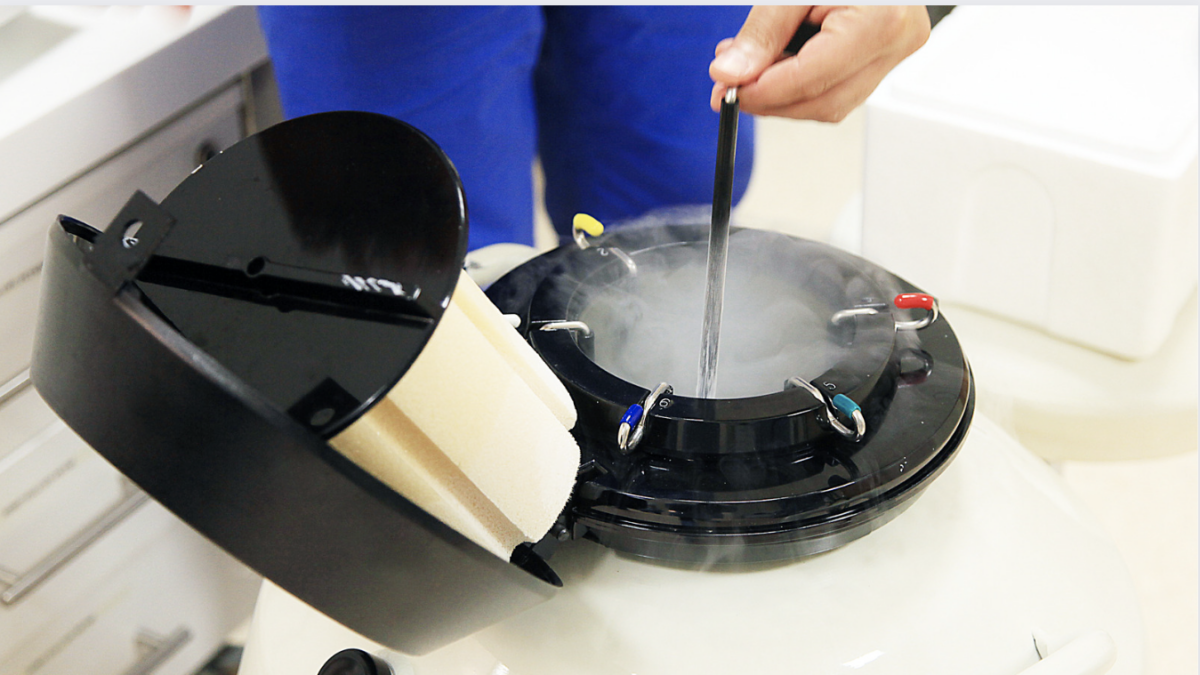
The New York Times is drawing the attention it wants this week, claiming to have obtained a copy of the president’s personal and business tax records prior to 2018 and publishing an analysis of the contents.
In an article that ran dozens of pages, the newspaper of record outlines the litany of discoveries embedded within those coveted and until-now secret documents. It could have saved itself a lot of paper and ink, however, with a much simpler statement of the facts, which are as follows:
- Trump was a risk-taking real-estate developer and investor who earned big and lost big at various times throughout his career.
- He took full advantage of the laws to avoid paying more income taxes than they required.
- As with most real estate developers, Trump personally guarantees significant amounts of debt, which requires periodic refinances.
- The president has relationships with people all over the globe, some of whom still do business with his companies.
- Like most savvy business people, Trump has employed the art of “truthful hyperbole” at times to enhance the perception of his financial strength to the greatest extent possible.
That’s it. Layered on top, though, is a thinly disguised and voluminous stack of innuendo and moralizing designed to cast a shadow on the president in the weeks before the election.
The New York Times Painted a Guilty Picture
With bated breath, the Times reported that Trump paid $750 in federal income taxes in 2016 and 2017 and no taxes in many other years. Nowhere does the article demonstrate any illegality related to those filings. Instead, it treats readers to an esoteric discussion of obscure tax laws, understood only by people who work in finance such as I do. This framing is designed to cast aspersions on Trump for his use of the tax code after sustaining large business losses at times, hoisting the idea that the president is in financial trouble.
While mocking Trump as having been “more successful playing a business mogul than being one in real life,” the Times concedes that the returns “do not reveal his true wealth.” Its suggestion is that despite hundreds of millions of dollars in reported assets, Trump is actually in financial duress.
As the statement itself revealed, however, tax returns do not provide a full picture of wealth. They do not show the market value of assets and are singularly oriented toward calculating taxes. That’s all. They are not personal financial statements, nor do they include critical information such as cash on hand.
With a not-so-subtle hint of scandal, the Times also reports, “[N]or do [the returns] reveal any previously unreported connections to Russia.” Even though we now know the dossier that drove the Russia investigation was misinformation created for the Democratic National Committee, the president is still subjected to the same innuendo.
If the New York Times cannot prove guilt, the paper can at least imply it. For good measure, the Times includes a robust analysis of income to Trump from the Miss Universe Pageant in Moscow in 2013.
Although Congress enacts laws to encourage investment in certain economically distressed and historic areas, and those communities typically cheer the arrival of those projects, The New York Times claims the assertion by Trump’s attorney that he “paid [taxes] with tax credits” is “a misleading characterization of credits, which reduce a business owner’s income-tax bill as a reward for various activities, like historic preservation.” So much struggle over a distinction without a difference, but it is a distinction the Times zealously seeks in order to prove the president is a public grifter.
This is, after all, the same New York Times that reported that Trump was possibly violating the emoluments clause by benefitting from state tax credits on a project in rural Mississippi. It failed to clearly disclose, however, that Trump did not own any of that project. Like the current review of Trump’s taxes, the Times instead served up selected details to create the illusion of potential guilt.
The Times Implies Impropriety Without Finding It
The New York Times laments that Trump used a basic function of the tax code, offsetting losses against income and using excess losses in past and future years (called “carrybacks” and “carryforwards”). While no developer seeks to lose money, The New York Times frames Trump’s use of losses as a planned trick, an “alchemy of [his] finances; using the proceeds of his celebrity to purchase and prop up risky businesses, then wielding their losses to avoid taxes.” Who knew that losing a dollar to get part of it back on your tax bill could be a strategic business plan?
After the Great Recession, President Barack Obama signed legislation that extended the carryback period from two to four years to help things rebound. The New York Times, however, claimed to be aghast that Trump used it to his favor after substantial losses in 2008 and 2009.
The $72 million refund he received has been the subject of an audit, and The New York Times, assuming the role of auditor, suggested Trump failed to meet the criteria for full abandonment of his investment interest, thereby limiting his write-off to just $3,000 per year. It also conceded, however, that “the materials reviewed by The Times do not make clear whether Trump’s refund application reflected his public declaration of abandonment.” Yet one can easily infer impropriety based on the reporting.
The newspaper dives into Trump’s expense write-offs with a curiosity not seen in the Clinton Foundation returns. It nit-picks at a general and administrative expense that went up five-fold from 2016 to 2017 at one golf club, then does not reveal the number. As a CFO who reviews data like this every month, I know materiality matters. Was it $5,000 or $5 million? Small numbers easily bounce around, and financials, like statistics, can be easily distorted analytically.
The article says that “tax records do not have the specificity to evaluate the legitimacy of every business expense.” True. Legal fees related to Stormy Daniels “could have been improperly included in legal fees written off as a business expense” — or maybe not. Again, innuendo requires no burden of proof.
Then there is the allegation that Trump escapes from taxes by paying consulting fees to his children who work in the Trump Organization. But why do so when the “recipient of the fees is still required to pay income tax?” The New York Times admits “it is not clear” what the advantage is and “there is no indication that the IRS has questioned” it. So it suggests “another, more legally perilous possibility is that the fees were a way to transfer assets to his children without incurring a gift tax.” So much suggestion, so little proof.
Somewhere along the way, in the labyrinth of accusations, is that Trump has engaged in foreign influence-peddling or relations with bad actors. The consulting fees shown on the tax returns, paid on projects in Azerbaijan and Turkey, were small, however, and apparently spread over years prior to Trump becoming president.
What did the Filipino president’s appointment of a Trump associate to be his envoy to D.C. matter with respect to these tax returns? There was no financial connection, only an inference of a “conflict.”
It is also problematic for the Times that membership revenues increased at Mar-a-Lago, even though the flood of applications began in 2015 before Trump was considered a serious candidate. The paper even sees sin in the Billy Graham Evangelistic Association holding an event at the Trump Hotel in Washington.
The New York Times Also Employs ‘Truthful Hyperbole’
Trump has been subjected to claims of profiteering since he took office, but the media rarely mention the effect of a CEO deciding to step away for four years or more. Things never run as well when the captain leaves the ship. Additionally, politics has severely tarnished Trump’s “brand equity,” and nowhere does the Times’ analysis capture that.
At every step, The New York Times interprets and exaggerates data to present the president as the worst businessman ever, a guy who couldn’t run a lemonade stand and who reeks of corrupt intent. Even the description of the Trump empire as “a collection of more than 500 entities,” seems an attempt to paint the organization as a mob-like outfit headed by a dangerous Gambino.
The Times asks at the outset “what secrets might lie hidden in [Trump’s] taxes. Is there a financial clue to his deference to Russia and its president, Vladimir V. Putin? Did he write off as a business expense the hush money payment to the pornographic film star Stormy Daniels in the days before the 2016 election? Did a covert source of money feed his frenzy of acquisition that began in the mid-2000s?”
It is masterful marketing, drawing in the public like a skilled carnival barker, but the questions are all duds. The New York Times is still getting the attention it desired, and in the process, it has impugned a president with inference and innuendo. There are numbers, dates, entities, and names — all nuggets of truth — but in the end, it is nothing more than the Times’ version of “truthful hyperbole.”









